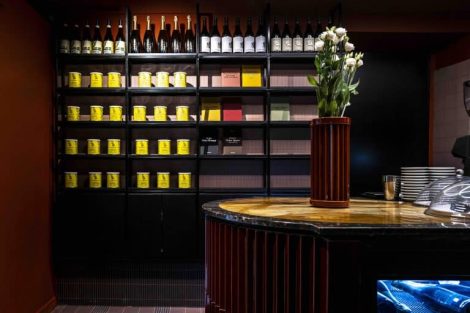Tintilia is the only indigenous grape variety of Molise, the second smallest region in Italy. Spanning nearly 4,500 square kilometres, Molise encompasses mountains, a vast hilly area, and a short stretch of coastline. It thrives in its natural habitat cultivated between the provinces of Campobasso and Isernia (recognised as DOC since 2011). Here, Molise’s porous borders have allowed grape varieties to flow between regions over time, as is common in transitional areas. Think of Montepulciano, Trebbiano, Falanghina, Greco, and especially Aglianico.
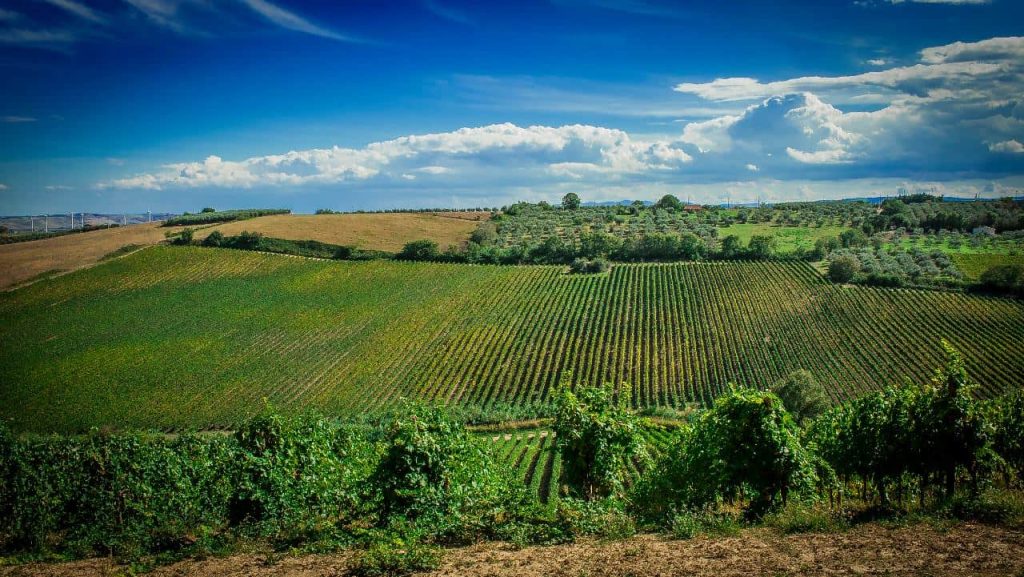
foto https://www.facebook.com/catabbocantine/
Tintilia is a grape that withstands the cold well, though it is not very vigorous and has relatively low productivity. Its blackish-blue berries are aromatic, producing a distinctive wine with a deep, rich colour. On the nose, it is marked by elegant spicy notes combined with aromas of red fruits. It boasts a robust structure, warmth, and complex flavours on the palate, with a long and persistent finish. Its good acidity and significant tannins make it suitable for medium-to-long ageing, often in tonneaux barrels, to enhance its softness and drinkability. Tintilia is a wine worth rediscovering and pairing with lamb, grilled meats, or stews.
Tintilia and viticulture in Molise
The origins of viticulture in Molise date back to the Samnites, even before the Romans expanded cultivation to a broader territory. Tintilia was likely introduced to Molise in the late 18th century during the Bourbon Spanish rule, with its name possibly derived from the Spanish word tinto (red). The grape found ideal climatic conditions in Molise, becoming the most widespread variety in the 19th century, particularly in the region's more internal areas.
However, post-WWII trends towards higher-yield grape varieties and the shift to planting in flat areas led to the progressive abandonment of Tintilia vineyards, nearly eradicating the grape. Interest in this valuable Molisan enological heritage only resurfaced in recent decades, with the recovery of the variety and its production as a pure wine. Tintilia came close to vanishing entirely before reclaiming its rightful place in Italy’s rich ampelographic scene, thanks to a few visionary producers in the 1990s who invested in this ancient black grape and the wines it produces, including Riserva and Rosé varieties.
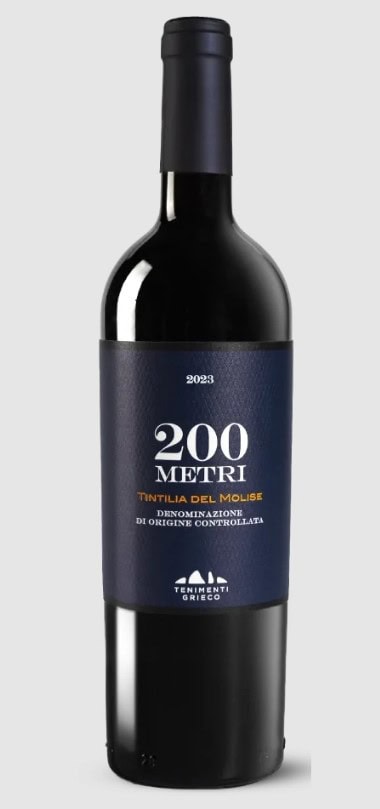
A new Tre Bicchieri entry
With Molise Molise Tintilia 200 Metri 2023 , the Tenimenti Grieco winery has joined the ranks of 52 wineries that this year received the Three Glasses accolade for the first time. This places it alongside Molise’s classic Don Luigi Riserva ’20 by Di Majo Norante at the top tier of the Gambero Rosso awards.
The best Tintilia wines tasted
Below are the Tintilia wines that earned Tre Bicchieri, Due Bicchieri Rossi e Neri in the 2025 Gambero Rosso Vini d’Italia guide.
Tenimenti Grieco’s Tintilia 200 Metri no longer surprises with its excellence. This year’s vintage, the 2023, impressed again with its fragrant, fresh, and multifaceted character, showcasing nuances of red cherries, ripe raspberries, Mediterranean shrubs, and a light peppery hint. The palate is taut and crisp, prioritising drinkability without sacrificing complexity or sophistication.
The winery has revitalised the former Masseria Flocco estate, a project spearheaded over a decade ago by Antonio Grieco, a Pugliese entrepreneur venturing into Molise’s winemaking. Located in Portocannone, near the Adriatic coast, the estate comprises 85 hectares of vineyards planted with indigenous varieties like Falanghina, Montepulciano, and Tintilia, alongside international grapes. These yield a diverse range of wines across multiple product lines.
Tenute Martarosa’s Tintilia 2021 stood out for its excellent price-to-quality ratio in Molise. It displayed ripe cherry, forest fruits, and earthy nuances, adding complexity to an effective, deeply satisfying sip.
Claudio Cipressi’s Tintilia 66 shines brightest in its 2019 version, with black olives, Mediterranean herbs, and a pleasant spiciness blending seamlessly with plum and cherry notes. The tannic structure is subtle, delivering a solid and refined sip. The Tintilia Macchiarossa 2019 combines blueberries with a faintly ferrous undertone, offering a wine with substantial body and volume.
Claudio Cipressi’s winery, located in Contrada Montagna, lies in the hilly interior of Campobasso province. Starting in 2000, Claudio transitioned from a previous career to focus on Tintilia, the flagship of his vineyards, which also feature Montepulciano, Falanghina, and Trebbiano.
The Catabbo winery delivered outstanding performance, particularly with its Tintilia-based labels. The 2022 vintage fermented in amphora showcases fresh blueberry and wild strawberry aromas, complemented by a juicy, lively palate with subtle tannins. Equally impressive is the Colle Cervino 2021, with notes of red cherries, aromatic herbs, and a fresh, fleshy palate.
Founded in the 1990s by Vincenzo Catabbo, the winery is based in San Martino in Pensilis, near the Adriatic coast. Its operations span three production areas, with a total of 40 hectares under vine, 13 of which are dedicated to Tintilia. Vincenzo’s children, Sara, Carla, and Pasquale, now work alongside him.
- Molise Tintilia in Anfora 2022 - Catabbo
- Molise Tintilia Colle Cervino 2021 - Catabbo
- Molise Tintilia S Catabbo 2021 - Catabbo
Campi Valerio’s La Lana 2020 offers an aromatic profile of herbal notes, liquorice, and blackcurrant, with a reactive palate that benefits from a touch of rusticity, adding rhythm to the sip. The winery also produces an excellent rosé version, Per Una Rosa.
- Molise Tintilia La Lana 2020 - Campi Valerio
- Molise Tintilia Rosato Per Una Rosa 2023 - Campi Valerio
Foto di apertura Claudio Cipressi - VIGNAIOLO

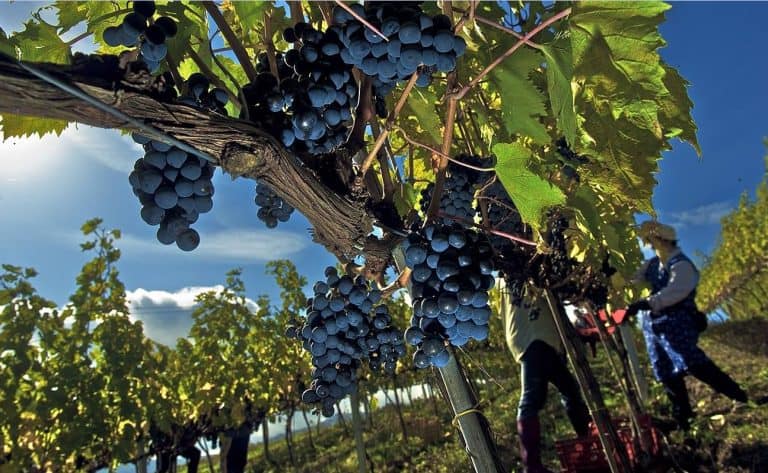
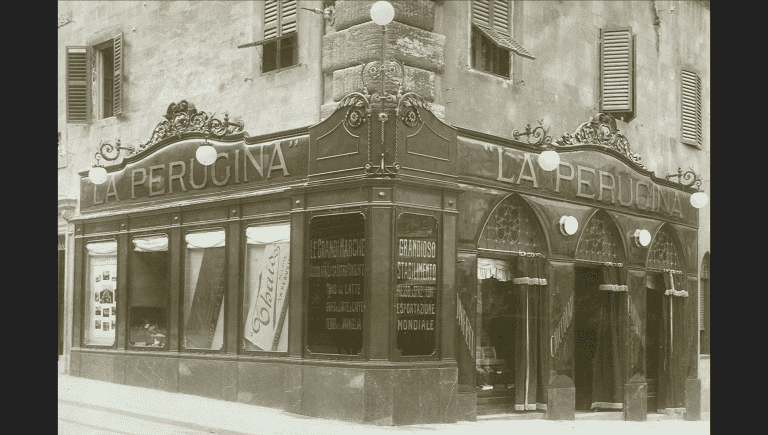 The fashion entrepreneur who invented Baci Perugina: a short journey through the streets of Perugia
The fashion entrepreneur who invented Baci Perugina: a short journey through the streets of Perugia “The wave of natural and orange wine is fading.” Interview with sommelier Valerio Capriotti
“The wave of natural and orange wine is fading.” Interview with sommelier Valerio Capriotti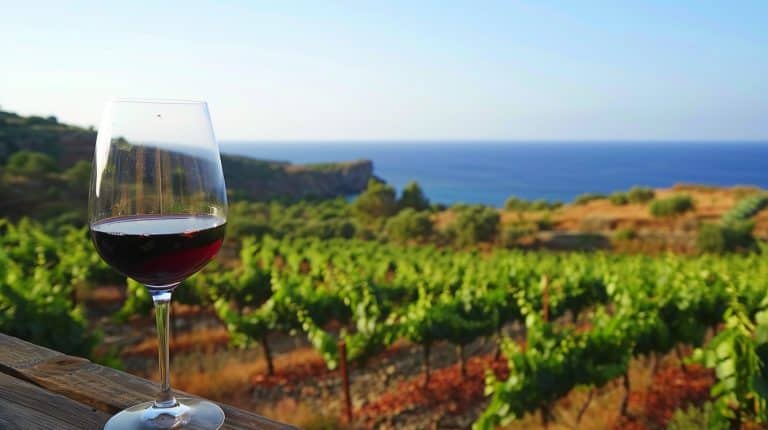 A low-alcohol Nero d'Avola. A new chapter begins for Sicilian wine
A low-alcohol Nero d'Avola. A new chapter begins for Sicilian wine The most sustainable restaurants and trattorias in Italy according to Gambero Rosso
The most sustainable restaurants and trattorias in Italy according to Gambero Rosso "In Thai supermarkets, there are entire walls of Prosecco. Italian wine is increasingly in demand." The brand manager of Italasia speaks out
"In Thai supermarkets, there are entire walls of Prosecco. Italian wine is increasingly in demand." The brand manager of Italasia speaks out
